Resistance to one antibiotic can make bacteria resistant or sensitive to another antibiotic, opening paths for combinatorial treatments. This study presents an approach to systematically discover and understand such antibiotic relationships.
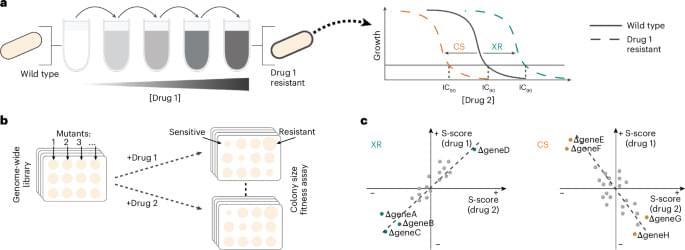

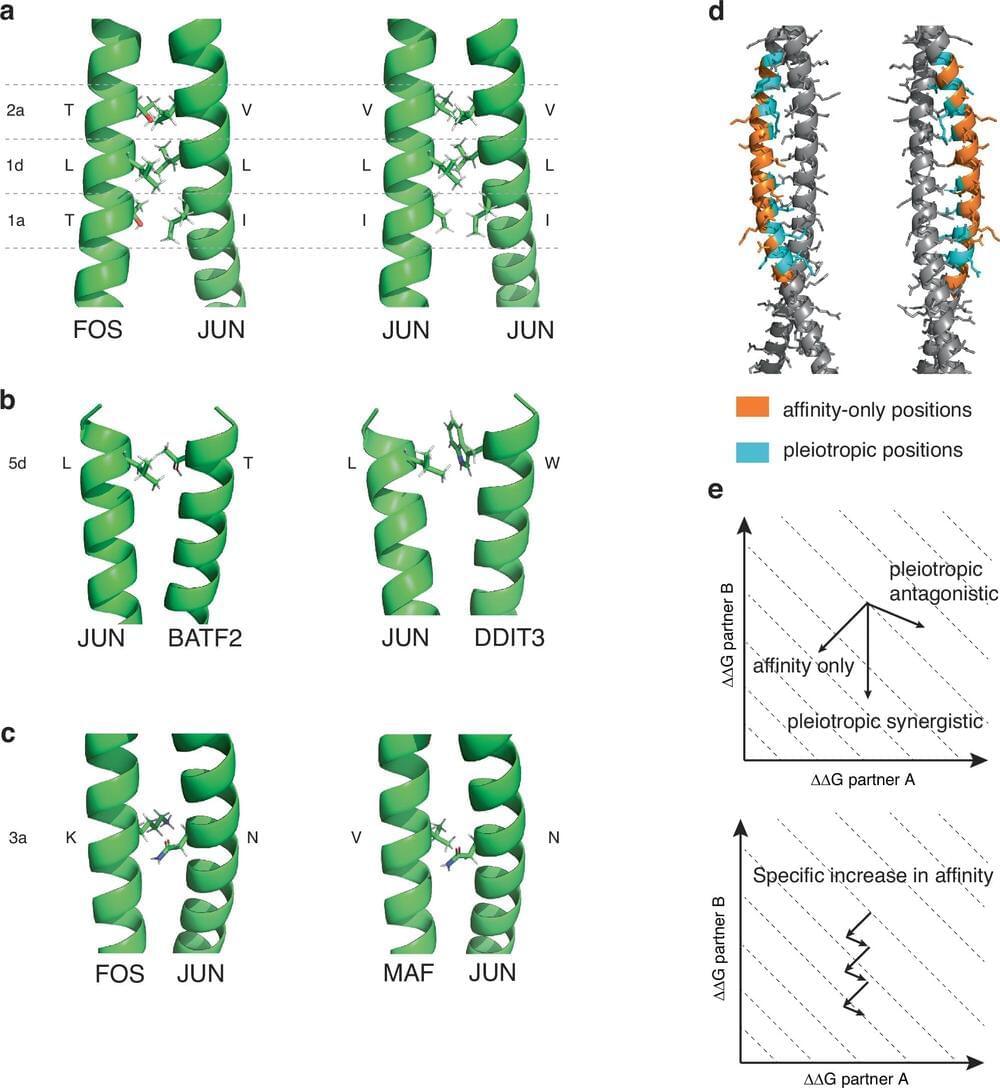
Investigating how proteins interact is key to understanding how cells work and communicate. In a new study published in Nature Communications, FMI researchers have provided key insights into how protein interactions are governed and how mutations influence cellular functions.
Proteins are the molecular machines of life, performing tasks ranging from driving chemical reactions to orchestrating cell communication. For these tasks, proteins must bind to the right partners with precision, avoiding mispairings that could disrupt cellular processes and lead to disease.
Scientists have long been curious about how changes in the sequence of amino acids —the building blocks of proteins—can alter a protein’s binding capabilities. To investigate this question, researchers in the Diss lab analyzed the effects of all possible mutations in a single protein across its interactions with an entire family of partner proteins. They focused on a protein called JUN, which plays a key role in DNA binding and cellular communication.
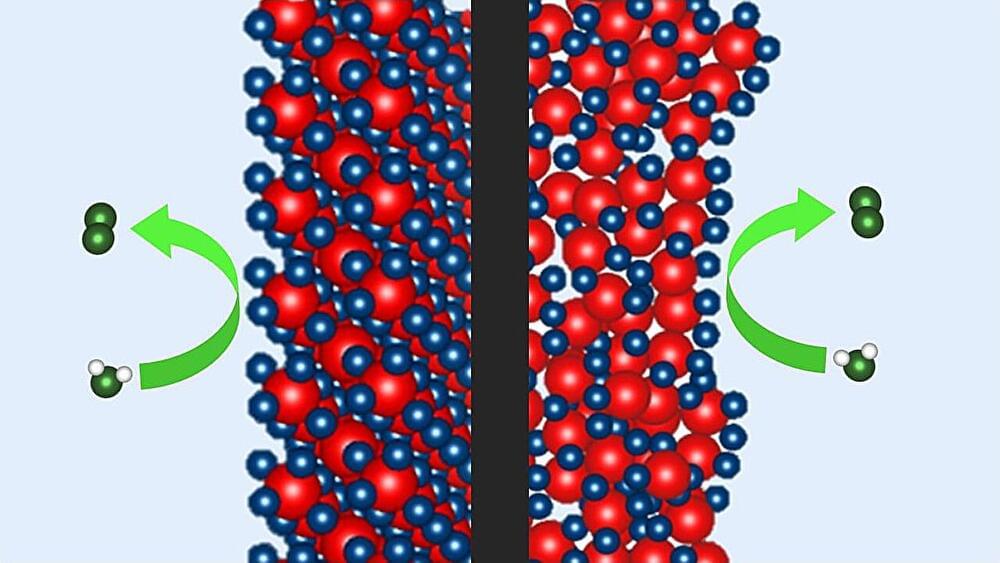
Iridium-based catalysts are needed to produce hydrogen using water electrolysis. Now, a team at HZB has shown that the newly developed P2X catalyst, which requires only a quarter of the iridium, is as efficient and stable over time as the best commercial catalyst. Measurements at BESSY II have now revealed how the special chemical environment in the P2X catalyst during electrolysis promotes the oxygen evolution reaction during water splitting.
In the future, hydrogen will be needed in a climate-neutral energy system to store energy, as a fuel, and a raw material for the chemical industry. Ideally, it should be produced in a climate-neutral way, using electricity generated from harnessing the sun’s or wind energy, via the electrolysis of water.
In that respect, Proton Exchange Membrane Water Electrolysis (PEM-WE) is currently considered a key technology. Both electrodes are coated with special electrocatalysts to accelerate the desired reaction. Iridium-based catalysts are best suited for the anode, where the sluggish oxygen evolution reaction occurs. However, iridium is one of the rarest elements on earth, and one of the major challenges is to significantly reduce the demand for this precious metal.
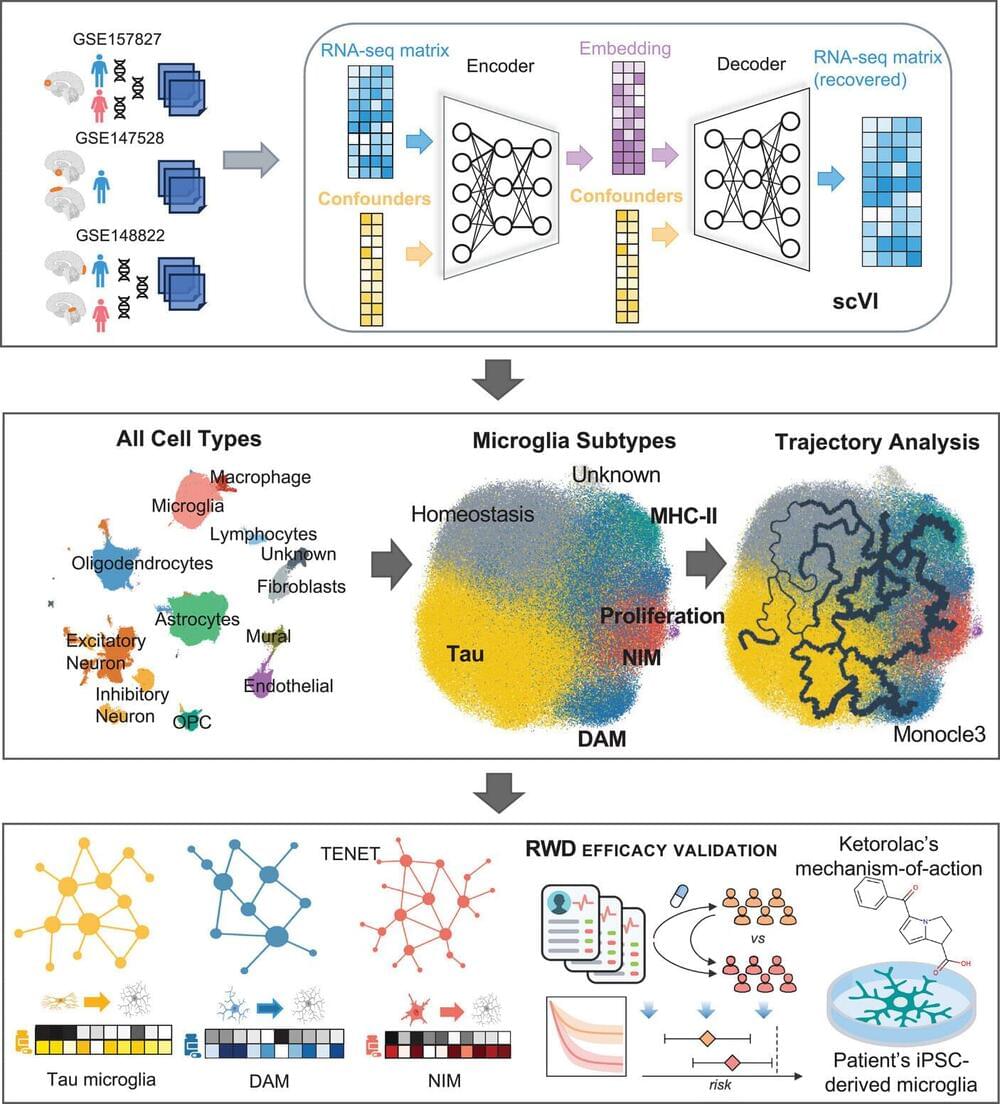
Cleveland Clinic Genome Center researchers have unraveled how immune cells called microglia can transform and drive harmful processes like neuroinflammation in Alzheimer’s disease. The study, published in the journal Alzheimer’s & Dementia, also integrates drug databases with real-world patient data to identify FDA-approved drugs that may be repurposed to target disease-associated microglia in Alzheimer’s disease without affecting the healthy type.
The researchers, led by study corresponding author Feixiong Cheng, Ph.D., hope their unique approach of integrating genetic, chemical and human health data to identify drug targets and corresponding drugs will inspire other scientists to take similar approaches in their own research.
Microglia are specialized immune cells that patrol our brains, seeking and responding to tissue damage and external threats like bacteria and viruses. Different types of microglial cells use different methods to keep the brain safe. Some may cause neuroinflammation—inflammation in the brain—to fight invaders or kickstart the repair process in damaged cells. Others may work to “eat” dangerous substances in the brain, and clean up damage and debris. However, during Alzheimer’s disease, new types of microglia can form that promote disease progression.
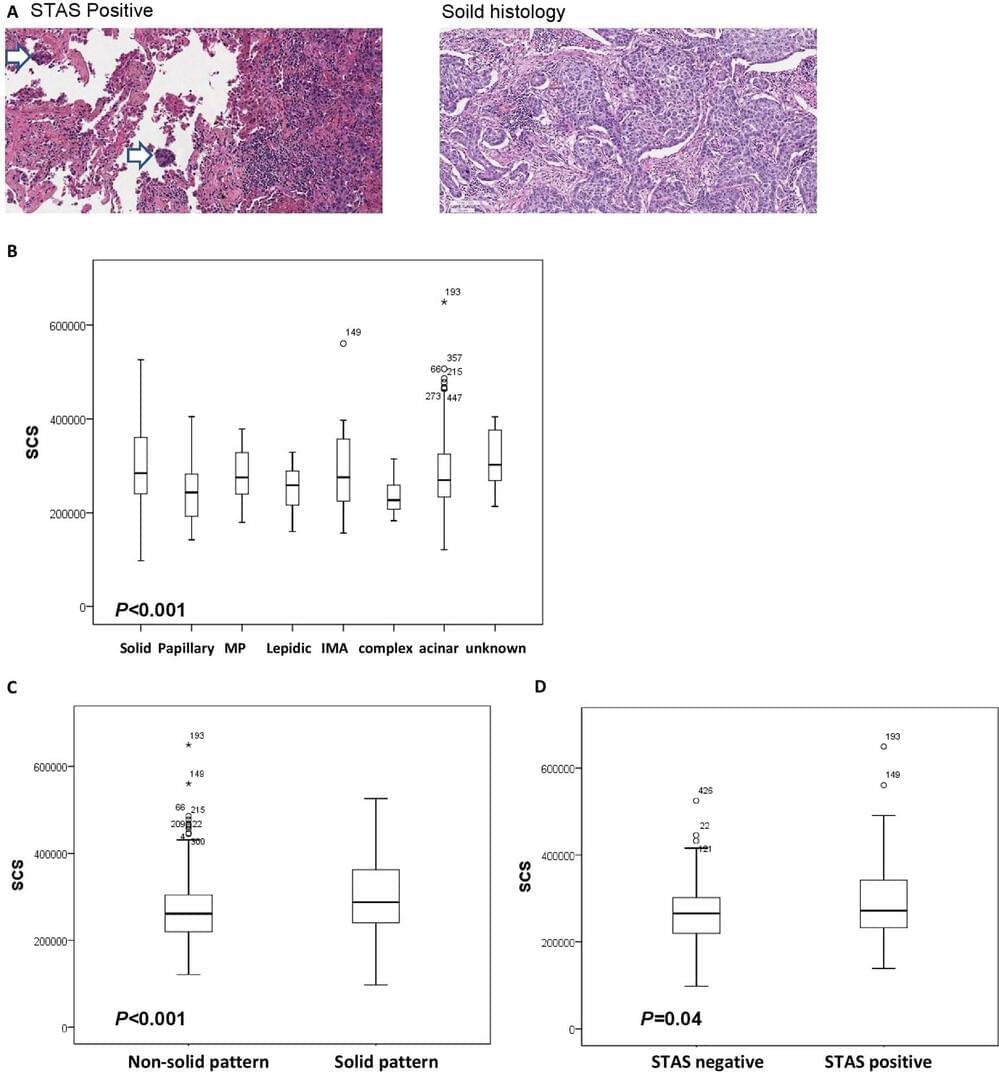
📢New in GeroScience by Springer Nature.
Senescence cell signature associated with poor prognosis, epithelial–mesenchymalion, solid histology, and spread through air spaces in lung adenocarcinoma by Young Wha Koh, Jae-Ho Han, Seokjin Haam & Hyun Woo Lee.
Cellular senescence is involved in critical processes in tumor progression. Despite this potential relationship, the relationship between tumor cell senescence, prognostic significance, spread through air spaces (STAS), and tumor histology has not been investigated in lung adenocarcinoma (LUAD). We used the LUAD PanCancer Atlas dataset to assess senescence cell signature (SCS) based on the SenMayo gene set. We examined the relationship between SCS, prognostic significance, STAS, and tumor histology. This relationship was confirmed in independent LUAD datasets by validation using immunohistochemical senescence markers. In the LUAD PanCancer Atlas dataset, patients with high SCS expression had a higher prevalence of solid histology and STAS patterns than those with low SCS expression.
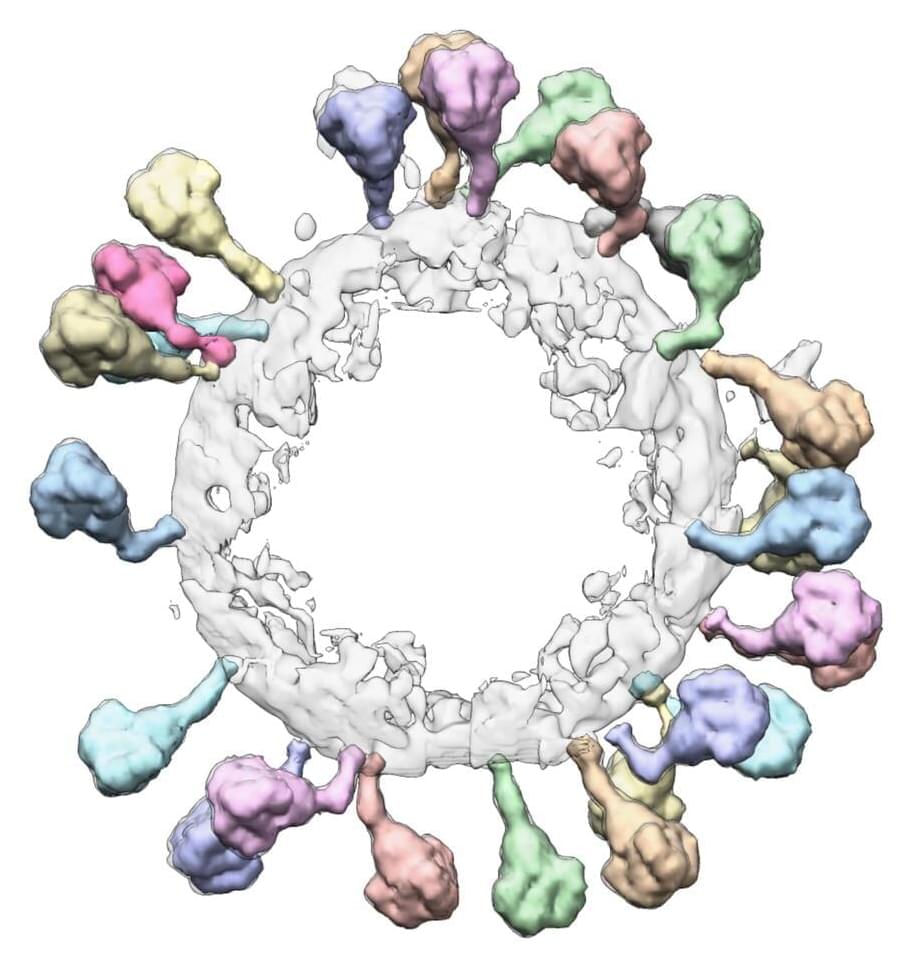
Proteins are so much more than nutrients in food. Virtually every reaction in the body that makes life possible involves this large group of molecules. And when things go wrong in our health, proteins are usually part of the problem.
In certain types of heart disease, for instance, the proteins in cardiac tissue, seen with high-resolution microscopy, are visibly disordered. Alex Dunn, professor of chemical engineering, describes proteins like the beams of a house: “We can see that in unhealthy heart muscle cells, all of those beams are out of place.”
Proteins are the workhorses of the cell, making the biochemical processes of life possible. These workhorses include enzymes, which bind to other molecules to speed up reactions, and antibodies that attach to viruses and prevent them from infecting cells.
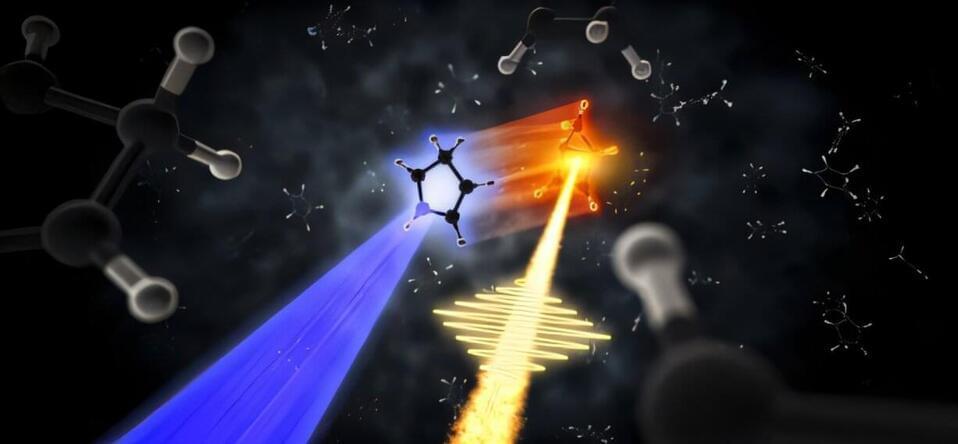
When molecules interact with ultraviolet (UV) light, they can change shape quickly, producing strain—stress in a molecule’s chemical structure due to an increase in the molecule’s internal energy. These processes typically take just tens of picoseconds (one millionth of a millionth of a second). Advanced capabilities at X-ray free electron laser (XFEL) facilities now enable scientists to create images of these ultrafast structural changes.
In work appearing in The Journal of Physical Chemistry A, researchers found structural evidence of a strained bicyclic molecule (a molecule consisting of two joined rings) that emerges from the chemical reaction that occurs when a cyclopentadiene molecule absorbs UV light. Cyclopentadiene is a good sample chemical for studying a range of reactions, and these findings have broad implications for chemistry.
Highly strained molecules have a variety of interesting applications in solar energy and pharmaceuticals. However, strain doesn’t typically occur naturally—energy must be added to a molecular system to create the strain. Identifying processes that produce molecules with strained rings is a challenge of broad interest in physical chemistry.

A joint research team led by Yuuki Kubo and Shiji Tsuneyuki of the University of Tokyo has developed a new computational method that can efficiently determine the crystal structures of multiphase materials, powders that contain more than one type of crystal structures. The method can predict the structure directly from powder X-ray diffraction patterns, the patterns of X-rays passing through crystals roughly the same size as instant coffee particles.
Unlike conventional methods, this approach does not require the use of “lattice constants” and can be applied to existing experimental data that could not be analyzed until now. Thus, the new method is a crucial asset for discovering new material phases and developing new materials. The findings are published in The Journal of Chemical Physics.
Many materials can have several crystal structures, “phases,” even in the same solid state. Determining the underlying crystal structures of materials is essential for understanding their properties and formulating strategies to develop new materials. However, conventional methods make calculations using the “lattice constant,” a property of the crystal being investigated.
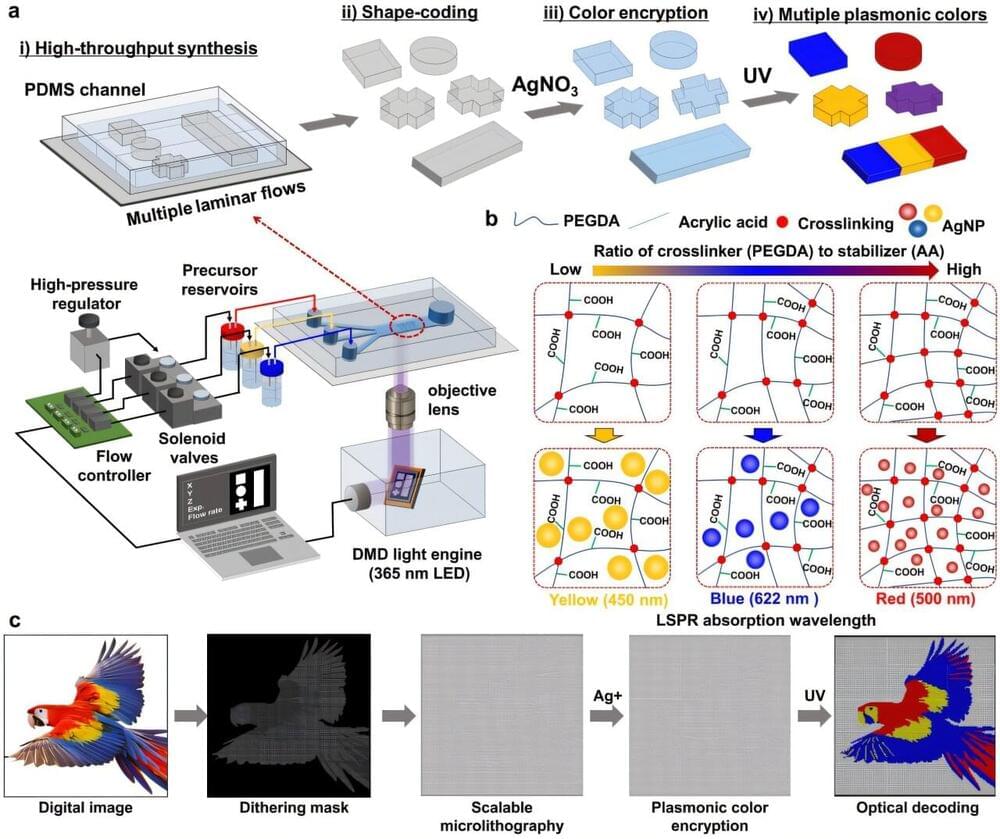
In a significant advancement in the field of anti-counterfeiting technology, Professor Jiseok Lee and his research team in the School of Energy and Chemical Engineering at UNIST have developed a new hidden anti-counterfeiting technology, harnessing the unique properties of silver nanoparticles (AgNPs). The results are published in Advanced Materials.
“The technology we have developed holds significant promise in preventing the counterfeiting of valuable artworks and defense materials, particularly in scenarios where authenticity must be verified against potential piracy,” Professor Lee explained.
The team leveraged the inherent disadvantage of AgNPs, which tend to discolor upon exposure to UV light, to create a controlled color development process. By trapping silver nanoparticles within a polymer matrix, researchers can manipulate particle size and, consequently, the color emitted under UV light. Larger polymer nets yield silver nanoparticles that appear yellow, while smaller nets produce a red hue, allowing for precise control of the resultant colors based on ingredient combinations.
Physicists are getting closer to controlling single-molecule chemical reactions – could this shape the future of pharmaceutical research?
A groundbreaking study demonstrates control over atomic-level matter through nanotechnology. By leveraging the precision of scanning tunneling microscopy, researchers have shown how competing chemical reaction outcomes can be influenced by manipulating energy levels. This advancement allows for targeted reactions, such as those needed for drug synthesis, while reducing unwanted byproducts.
Controlling matter at the atomic level.